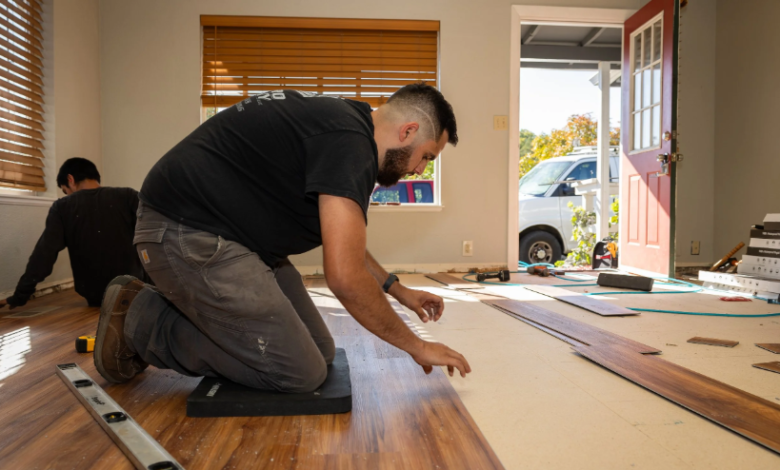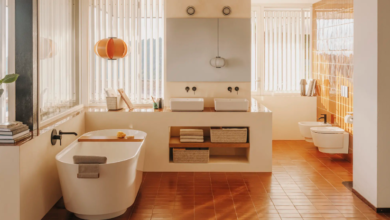Floor and Installation Best Practices for Durable and Efficient Results

Floor and installation are critical step in any home or commercial renovation that directly impacts the durability and appearance of the space. Choosing the right materials and ensuring proper installation techniques are followed can prevent common issues like uneven surfaces, premature wear, and costly repairs.
Professional floor and installation services offer expertise in handling various flooring types, including hardwood, vinyl, laminate, and carpet, which ensures a seamless and long-lasting result. Understanding the basics of installation, such as accurate measurements and proper acclimation of materials, can save time and money.
Whether upgrading a home or renovating a business, high-quality flooring installation improves both function and aesthetic appeal. Reliable contractors and expert installers contribute to a smooth process that meets specific needs and budgets.
Types of Flooring Materials
Flooring materials vary widely in durability, cost, and maintenance requirements. Each material offers distinct benefits and drawbacks that influence where and how it should be used.
Hardwood Flooring
Hardwood flooring is prized for its natural beauty and long lifespan. It comes in solid and engineered forms; solid hardwood is milled from a single piece of wood, while engineered hardwood consists of layers with a hardwood veneer on top.
Installation typically uses a nail-down method, securing the planks directly to a subfloor. Hardwood floors can be sanded and refinished multiple times, extending their life. However, they are sensitive to moisture and can warp in humid environments.
Pricing ranges higher than many alternatives due to the cost of materials and installation. Hardwood adds value to homes, especially in living areas and bedrooms, but is less ideal for basements or bathrooms.
Laminate Flooring
Laminate flooring mimics the look of wood or stone but is made from high-density fiberboard topped with a photographic layer and a protective coating. This makes it more resistant to scratches and dents compared to hardwood.
It is usually installed as a floating floor, which means planks click together and rest above the subfloor without nails or glue. This results in easier and faster installation, often suitable for DIY projects.
Laminate is more affordable than hardwood and performs well in moderate foot traffic areas. However, it is less durable against water damage, and once damaged, planks generally need full replacement rather than refinishing.
Vinyl Flooring
Vinyl flooring offers high durability and water resistance at a lower price point. It can come in sheets, tiles, or planks, with luxury vinyl planks (LVP) being popular for their realistic wood or stone appearance.
Installation methods vary: peel-and-stick tiles for DIY, or glue-down and click-lock systems for professional jobs. Vinyl handles heavy foot traffic and moisture well, making it suitable for kitchens, bathrooms, and basements.
Maintenance is simple, often requiring only regular sweeping and damp mopping. While it doesn’t add as much resale value as hardwood, vinyl is favored for practicality and ease of installation.
See also: Custom Home Builder Guide for Personalized Luxury Residences
Tile and Stone Flooring
Tile and stone are highly durable and water-resistant materials ideal for kitchens, bathrooms, and entryways. Common types include ceramic, porcelain, marble, granite, and slate.
Installation involves setting tiles with mortar and applying grout between them, which requires skill and time. These materials stand up well to moisture and heavy use but can feel cold and hard underfoot.
Costs vary significantly depending on material and complexity of installation. Tile and stone are valued for longevity and low maintenance but may require periodic sealing to prevent staining or water damage.
Professional Floor Installation Techniques
Successful floor installation depends on a well-prepared base, the right installation method, managing moisture levels, and thorough final inspections. Each step impacts the durability and appearance of the finished floor.
Subfloor Preparation
Proper subfloor preparation is essential for a stable and long-lasting floor. The subfloor must be clean, dry, and level, with any cracks or imperfections repaired before installation. Uneven surfaces can cause gaps, creaks, or damage over time.
Most professionals test for moisture to avoid future warping or mold. Depending on the floor type, additional underlayment or vapor barriers may be necessary. For example, plywood or concrete subfloors may require specific primers or moisture seals to ensure adhesion and protect the flooring material.
Installation Methods
Different flooring materials require distinct installation techniques. Common methods include:
- Click-lock: Floors snap together without adhesives, ideal for laminate and some engineered hardwood.
- Glue-down: Adhesive secures the flooring to the subfloor, standard for vinyl and some hardwood.
- Nail or staple-down: Used mainly for solid hardwood, this method provides strong mechanical attachment.
- Floating: The floor rests on an underlayment without direct attachment to the subfloor.
The choice depends on the flooring type, room conditions, and desired durability. Accurate alignment and expansion gaps are critical to accommodate natural wood movement.
Moisture and Acclimation Considerations
Moisture levels directly affect floor longevity and performance. It is standard practice to measure moisture in both the subfloor and the flooring material before installation. Flooring should be acclimated by storing it in the installation area for several days.
This prevents issues like warping, buckling, or gaps caused by sudden temperature or humidity changes. In moisture-prone areas, vapor barriers or special sealants are used to protect flooring, especially hardwood and laminate.
Quality Assurance and Finishing Touches
Final checks ensure the floor looks even and functions well. Professionals inspect alignment, spacing, and surface condition before finishing. Proper installation of baseboards and trim conceals expansion gaps and enhances aesthetics.
Sealing or applying finishes is done as necessary, depending on the material. Cleaning and removing all debris prevent scratches or adhesion failures. Thorough quality control reduces the risk of early repairs and maintains the floor’s appearance.





